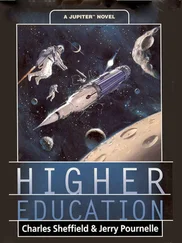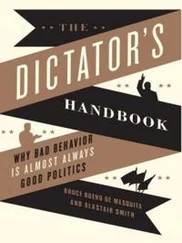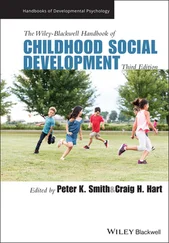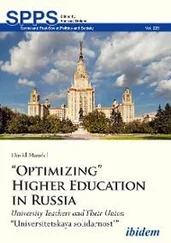76 Still, G. and Kent, E. (1996). Connecting learning and activism: an experiment in adult higher education. In: Celebrating Excellence: Learning and Teaching in Adult Higher Education. National Conference on Alternative and External Degree Programs for Adults (15th, Columbus, Ohio, October 5–7, 1995), 130–135. Washington, DC.: Alliance, an Association for Alternative Degree Programs; American Council on Education, Available at: ED402510.pdf (accessed 21 August 2021).
77 Tryon, E. and Stoecker, R. (2008). The unheard voices: Community organizations and service‐learning. Journal of Higher Education Outreach and Engagement 12 (3): 47–60.
78 UNESCO (2017). Education for Sustainable Development Goals: learning objectives. https://unesdoc.unesco.org/ark:/48223/pf0000247444
79 UNESCO (2021a). Sustainable development goal 4 and its targets. https://en.unesco.org/education2030‐sdg4/targets(accessed 19 August 2021).
80 UNESCO (2021b). Leading SDG 4 ‐ education 2030. https://en.unesco.org/themes/education2030‐sdg4(accessed 19 August 2021).
81 United Nations (2015). 17 Goals to transform our world. https://www.un.org/sustainabledevelopment(accessed 24 November 2021)
82 Vaccaro, A. and Mena, J.A. (2011). It's not burnout, it's more: queer college activists of color and mental health. Journal of Gay & Lesbian Mental Health 15 (4): 339–367. https://doi.org/10.1080/19359705.2011.600656.
83 Vare, P. and Scott, W. (2007). Learning for a change: exploring the relationship between education and sustainable development. Journal of Education for Sustainable Development 1 (2): 191–198.
84 Verplanken, B. and Wood, W. (2006). Interventions to break and create consumer habits. Journal of Public Policy & Marketing 25 (1): 90–103.
85 Waddock, S. (2013). The wicked problems of global sustainability need wicked (good) leaders and wicked (good) collaborative solutions. Journal of Management for Global Sustainability 1 (1): 91–111. https://www.ejournals.ph/article.php?id=16147.
86 Watson, L., Johnson, C., Hegtvedt, K.A., and Parris, C.L. (2015). Living green: examining sustainable dorms and identities. International Journal of Sustainability in Higher Education 16 (3): 310–326.
87 Wenger, E. (1999). Communities of Practice: Learning, Meaning, and Identity. Cambridge: Cambridge University Press.
88 Wiek, A., Withycombe, L., and Redman, C.L. (2011). Key competencies in sustainability: a reference framework for academic program development. Sustainability Science 6: 203–218.
89 Williford, B. (2015). Combining problem based learning and activism in a feminist classroom. Theory in Action 8 (1): 23–50.
90 Winter, J. and Cotton, D. (2012). Making the hidden curriculum visible: sustainability literacy in higher education. Environmental Education Research 18 (6): 783–796.
91 Yin, R.K. (2003). Applications of Case Study Research, 2e. Thousand Oaks: Sage.
92 Zoo, A. and Steed, B. (2019). Bungalow life: The students living sustainably on campus. BBC News (24 September). https://www.bbc.com/news/in‐pictures‐49727821(accessed 24 November 2021)
1 1It should be noted that not long after the start of this project, a campus allotment was established with specific space for a student food growing society.
3 Outcome‐Based Education Toward Achieving Sustainable Goals in Higher Education
G. R. Sinha, Nanda Gunawardhana, and Chih‐Peng Fan
3.1 Outcome‐Based Education (OBE) and its Significance
Among the 17 Sustainable Development Goals (SDGs) (García Reyes 2013; Swaminathan and Kesavan 2016; Hall and Tandon 2017; Rieckmann et al. 2017; TWI2050 – The World in 2050 2018; UN and Australian Government 2018; Franco et al. 2019; Kioupi and Voulvoulis 2019; Marshall and Oxfam Education 2019; Wright 2014; Nations 2015; Swaminathan and Kesavan 2016; UNESCO 2016; van't Land and Herzog 2017; UN and Australian Government 2018; Kioupi and Voulvoulis 2019; UNESCO 2019; Sinha 2021), sustainable growth in higher education has been placed in the important position of SDG 4 and it has been envisaged that by 2030 equality in access and the right to education will be same for all, including women, across the world. Education is key to resolving a number of problems that lead to socioeconomic challenges everywhere, and thus education and appropriate awareness among people in general can act as solution to most of the problems. A number of reforms, policies, strategies, and transformation measures have been developed from time to time in the field of education. In this chapter, the emphasis is given to higher education in which the OBE framework (Pritchett 2015; Kioupi and Voulvoulis 2019; UNESCO 2019; UNICEF 2019; Sinha 2021) has great significance and suggests that the outcome of education lies in the true assessment of student learning outcomes (SLOs) (Pritchett 2015; Kioupi and Voulvoulis 2019; UNESCO 2019; UNICEF 2019).
OBE‐based education does not only empower the students or learners in developing the academic quality but strengthens a set of employability skills (Franco et al. 2019) in them. This set of skills helps develop competence in learners that enables further excellence. The ultimate goal of education is to achieve or to strive toward excellence, leading to an improvement in quality in life. As we know, OBE is envisaged to ensure the actual SLOs and should be reflected in activities, performance, acts, behavior, and attitude of the students when placed in industries or workplace. Generally, SLOs are articulated or formulated by keeping in mind the following important components of higher education organizations:
Vision and mission of the university or organization.
Program educational objectives (PEOs).
Program outcomes (POs) (will be associated with graduate attributes).
Course outcomes (COs) (will have course objectives as well).
Every organization has its specific vision and mission statements (Coughlan 2011; Kioupi and Voulvoulis 2019) along with some short range goals (SRGs) and long range goals (LRGs) (Swaminathan and Kesavan 2016; Hall and Tandon 2017; UN and Australian Government 2018; Kioupi and Voulvoulis 2019). These goals, mission, and vision statements play a most significant role in formulating PEOs and POs; of course, POs (García Reyes 2013; UNESCO 2016; United Nations Development Programme 2017) are just expected outcomes which need to be truly validated at the end of the program if the POs are mapped with set PEOs. This requires an important process used in higher education and its transformation (Sinha 2021) that maps the relevance and the extent to which POs are actually seen in the students. The PEOs are major objective statements of specific programs and thus each program in a university department will have its own PEOs that are written not as simple statements but are formulated taking a number of stakeholders into consideration. The formulation of PEOs and POs involves a strong interaction and network with following stakeholders:
Relevant industries
Alumni
Institutes/universities practicing research par excellence
Parents
Employers
Students and others
This list of stakeholders (Franco et al. 2019; Kioupi and Voulvoulis 2019) plays a large role in articulating PEOs and POs because the expectations and dreams of each of the stakeholders are taken into consideration. Each program offers a number of courses and thus COs will be associated with all the courses offered (Coughlan 2011), and also the course educational objectives (CEOs). Before mapping happens between POs and PEOs, the same process needs to be performed to see whether envisaged COs are in congruence with the CEOs. In addition, the COs will be a subset of the POs and thus achieving or attaining a particular CO means contributing something toward any one of the POs. Vision and mission statements are also devised for departments and can be derived or formulated by keeping in mind the vision and mission statements of the overall organization. The mapping of SLOs with PEOs is explained in Section 3.2with examples of practices that have been adopted to actually measure the attainment of SLOs in the students.
Читать дальше












